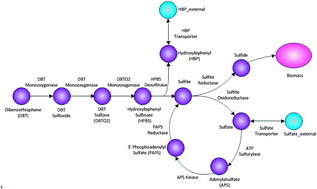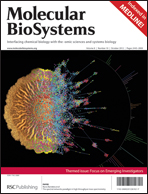Roles of sulfite oxidoreductase and sulfite reductase in improving desulfurization by Rhodococcus erythropolis
Abstract
Rhodococcus erythropolis has been widely studied for desulfurization. However, activity levels required for commercial application have not been achieved. A major limitation of the current work in biodesulfurization is inadequate information regarding sulfur metabolism generally, and in particular the metabolism of the sulfur obtained from dibenzothiophene (DBT) metabolism via the 4S pathway. In this work, we have investigated the possible routes taken by the sulfur from DBT to convert into biomass or other metabolites. We propose two alternate hypotheses. In the first, we hypothesize that the cell can convert via sulfite reductase (SR) the sulfite from the metabolism of DBT into sulfide that can be assimilated into biomass. However, in the process, it may convert any excess sulfite into extracellular sulfate via sulfite oxidoreductase (SOR) to avoid the toxic effects of sulfite. In the second, we speculate that the cell cannot assimilate the sulfite directly into biomass via SR. It must first use SOR to produce extracellular sulfate, and then recapture that sulfate into biomass via SR. Thus, either way, we propose that SOR and SR activities, in addition to dsz genes and cofactors, may be critical in increasing desulfurization levels significantly. In particular, we suggest that the simultaneous increase in SOR activity and decrease in SR activity can enable increased desulfurization activity.


 Please wait while we load your content...
Please wait while we load your content...